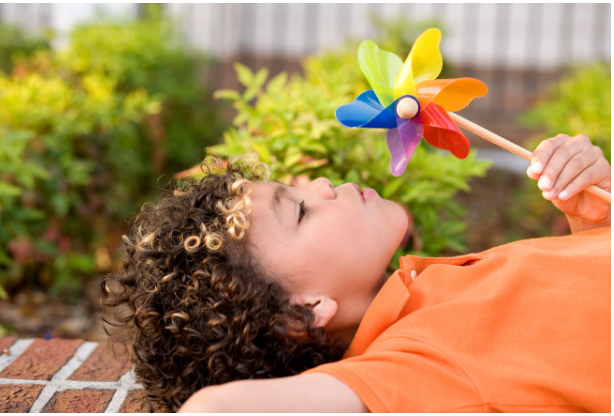
By Hayley Jackson, Extension Educator in Lancaster County
This is fourth and final in a series of articles. Previous Nebline issues are at https://lancaster.unl.edu/nebline.
Challenging behavior in young children is defined as a repeated pattern of behavior that impedes the ability of the child to engage in appropriate social interactions with both their peers and adults (NCPMI, 2023). There are some simple strategies we can use to lessen the likelihood that challenging behaviors are going to happen.
This month, we will be examining the importance of helping children calm down and identify two strategies we can use to support children in regulating their emotions. There are many times throughout the course of a typical day that young children will experience strong emotions and need support in helping to calm their bodies. Take, for example, a child who has to wait their turn to play with the iPad because their older sibling is using it. That child may experience disappointment in not getting the iPad right away, frustration at having to wait their turn and anger directed at their sibling.
These are powerful emotions that are likely difficult to manage for a young child. Below are some strategies caregivers can use to help support the young children in their life manage big emotions.
1. EMOTION RECOGNITION — One of the first steps in supporting children’s ability to manage their emotions is to teach them about emotions and the names for complex emotions such as anger, happiness or frustration. Reading books about different emotions or singing songs about emotions is a great way to introduce these feelings to young children and give them the language needed to correctly identify and label emotions. A few examples of feelings books are “Glad Monster, Sad Monster” by Ed Emberly, “Sometimes I’m Bombaloo” by Rachel Viel and “The Way I Feel” by Janan Cain.
2. DEEP BREATHING —When children experience intense emotions, one of the best ways to help them calm down is by taking deep breaths. Taking deep breaths engages the body’s parasympathetic nervous system which is responsible for calming the body after a stressful event. You can teach children to take a “belly breath” by having them place their hands on their tummy and then taking a deep breath in and out. Ask children to pay attention to the way their tummy moves as they continue to take long breaths in and out. Visuals can also be helpful when teaching children to take deep breaths. Using a pinwheel is one way for children to visualize taking a deep breath. Show children how the pinwheel moves when you take a deep breath and then exhale near the pinwheel. Encouraging children to make the pinwheel move with their own breath is a great way to encourage deep breathing.
Helping children learn to calm down and regulate their emotions is a valuable skill they will use for the rest of their lives. Deep breathing and learning to recognize our emotions are just two strategies that can support children learning this skill. As with any new skill, the more you practice, the easier it will become, so I encourage you to practice with the young children in your life today.